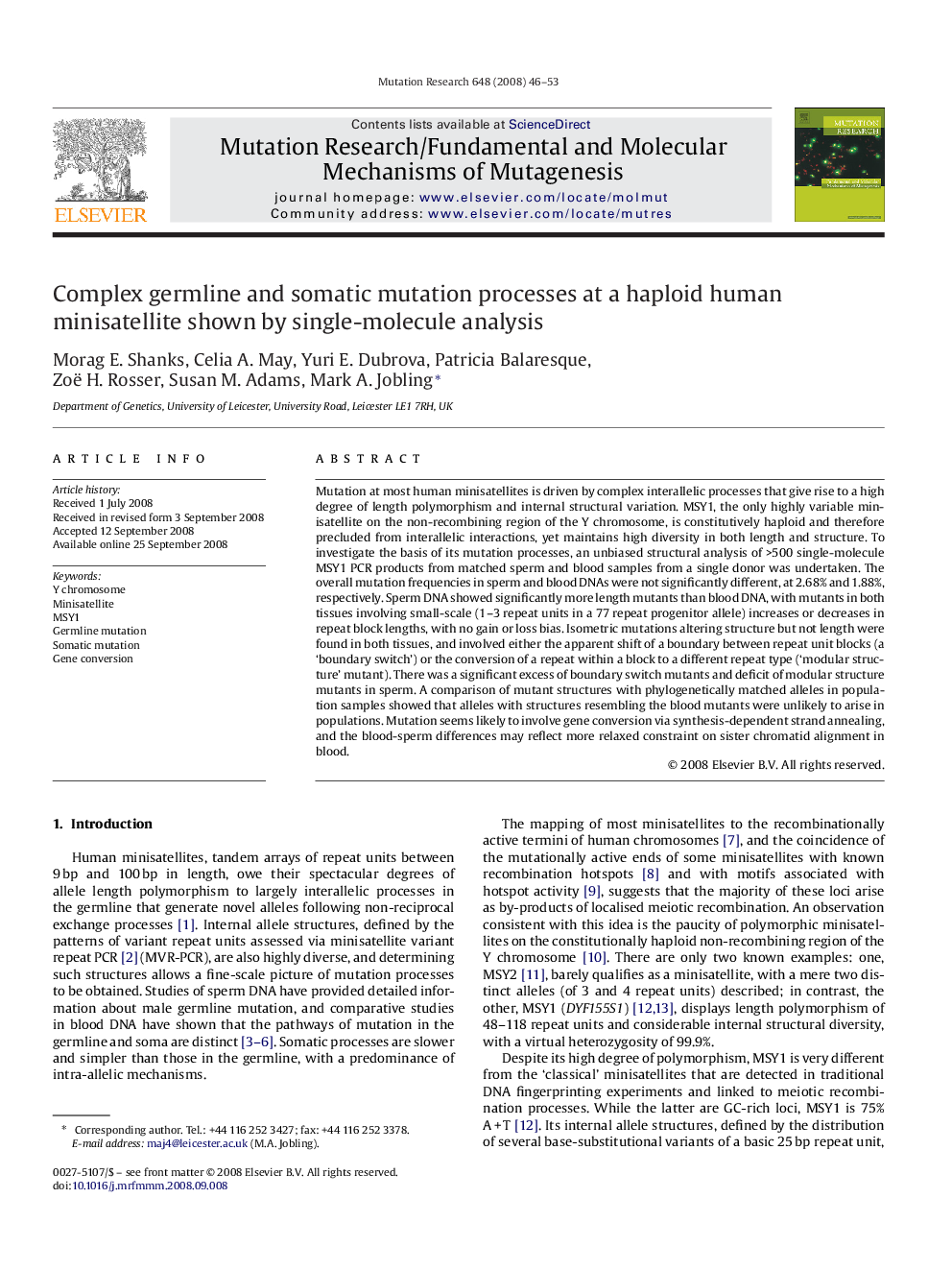| Article ID | Journal | Published Year | Pages | File Type |
|---|---|---|---|---|
| 8456090 | Mutation Research/Fundamental and Molecular Mechanisms of Mutagenesis | 2008 | 8 Pages |
Abstract
Mutation at most human minisatellites is driven by complex interallelic processes that give rise to a high degree of length polymorphism and internal structural variation. MSY1, the only highly variable minisatellite on the non-recombining region of the Y chromosome, is constitutively haploid and therefore precluded from interallelic interactions, yet maintains high diversity in both length and structure. To investigate the basis of its mutation processes, an unbiased structural analysis of >500 single-molecule MSY1 PCR products from matched sperm and blood samples from a single donor was undertaken. The overall mutation frequencies in sperm and blood DNAs were not significantly different, at 2.68% and 1.88%, respectively. Sperm DNA showed significantly more length mutants than blood DNA, with mutants in both tissues involving small-scale (1-3 repeat units in a 77 repeat progenitor allele) increases or decreases in repeat block lengths, with no gain or loss bias. Isometric mutations altering structure but not length were found in both tissues, and involved either the apparent shift of a boundary between repeat unit blocks (a 'boundary switch') or the conversion of a repeat within a block to a different repeat type ('modular structure' mutant). There was a significant excess of boundary switch mutants and deficit of modular structure mutants in sperm. A comparison of mutant structures with phylogenetically matched alleles in population samples showed that alleles with structures resembling the blood mutants were unlikely to arise in populations. Mutation seems likely to involve gene conversion via synthesis-dependent strand annealing, and the blood-sperm differences may reflect more relaxed constraint on sister chromatid alignment in blood.
Related Topics
Life Sciences
Biochemistry, Genetics and Molecular Biology
Cancer Research
Authors
Morag E. Shanks, Celia A. May, Yuri E. Dubrova, Patricia Balaresque, Zoë H. Rosser, Susan M. Adams, Mark A. Jobling,
